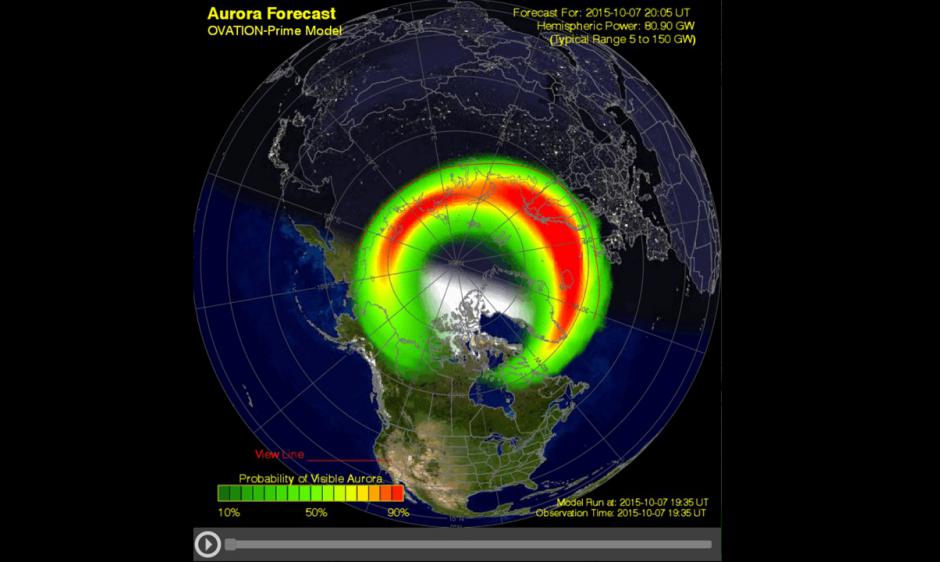
Continued G1-G2 (Minor-Moderate) storm levels expected
The anticipated coronal hole began to affect Earth early on 07 Oct 2015. Since then, G3 (Strong) geomagnetic storm conditions have been observed at 07/1909 UTC (07/3:09 pm EDT) as a result. Conditions peaked yesterday and have since settled into the G1 - G2 (Minor - Moderate) range and are expected to continue through the rest of the UTC day.
Shown above is the Ovation Aurora Forecast model, a model that uses the upstream solar wind observations and makes a short-term (roughly 30 minute) prediction on the visibility of aurora. For best viewing, one should also be in an area free of light pollution (e.g. away from city lights).